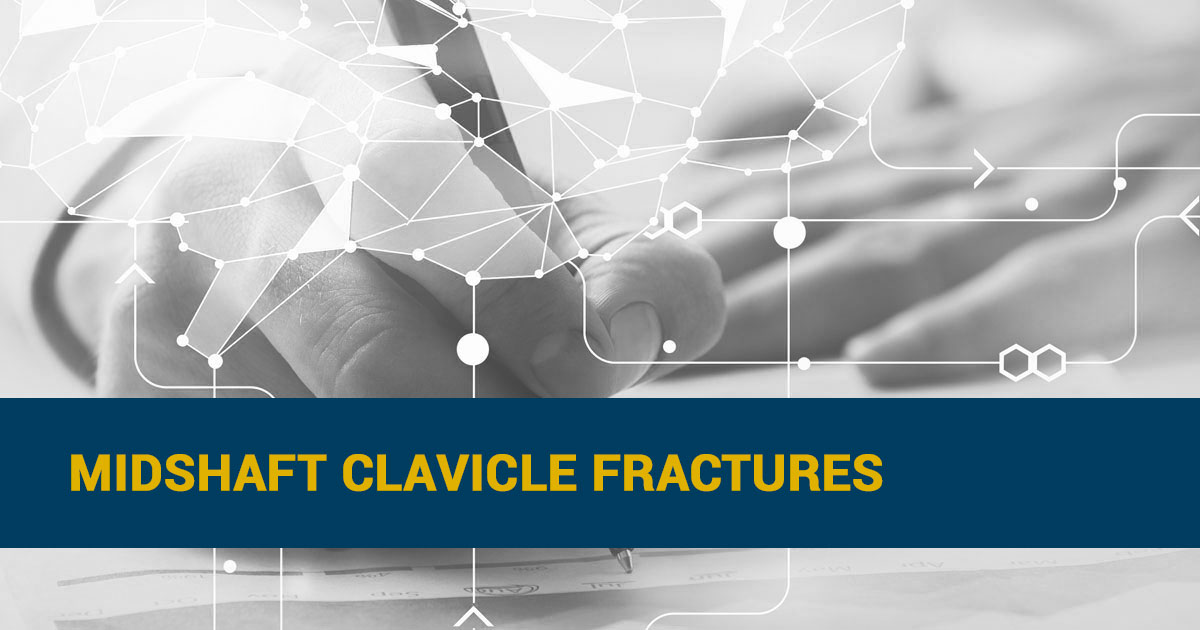
Midshaft Clavicle Fracture
It is now generally accepted that displaced midshaft clavicle fractures benefit from internal fixation. Plating and intramedullary fixation have become the accepted methods of fixation. The purpose of this study was to see if one method of fixation of clavicle fractures has a lower complication rate and higher union rate compared to the other.
Materials and Methods
Over the last 9 years the senior author internally fixed 430 midshaft clavicle fractures. 255 of these were with intramedullary fixation using a Rockwood pin and 175 were with plate fixation ranging from a DCP plate to an anatomical plate. All patients were assessed until union looking at scarring and paraesthesia, range of motion, function, and return to normal activity. Any complications were documented and the 2 methods were compared.
Results
All fractures eventually healed. The intramedullary pins had the higher complication rate. 2 of the pins had a deep infection requiring removal and eventual plate fixation. Other complications included 5 cases of capsulitis, 3 cases of refracture after removal of the pin, non-union requiring revision plating 15/255(6%), and a 10% incidence of irritation from the end of the pin. Of those with plate fixation there were 2 non unions out of 175(1%). There was one bent plate 5 weeks post-op due to football requiring revision plating surgery. There were 2 plates with some backing out of screws and mild plate elevation laterally. Both united with conservative management and no loss of function. There were no deep infections. Patients with plate fixation regained range of motion quicker and earlier normal function compared to the pins.
Conclusion
Both methods of fixation had a high union rate with plate fixation showing a statistically significant lower rate of non union compared to pinning. The overall complication rate was higher with intramedullary fixation. Plate fixation provided an earlier return to normal function, range of motion and a more predictable result. Plate fixation was possible with all forms of clavicle fractures whereas intramedullary fixation was limited in comminuted fractures, small clavicle canals and osteoporotic bone. This series and patient feedback has changed the way I manage clavicle fractures.
For specific advice regarding midshaft clavicle fractures, please book an appointment with Dr David Duckworth on (02) 9806 3333